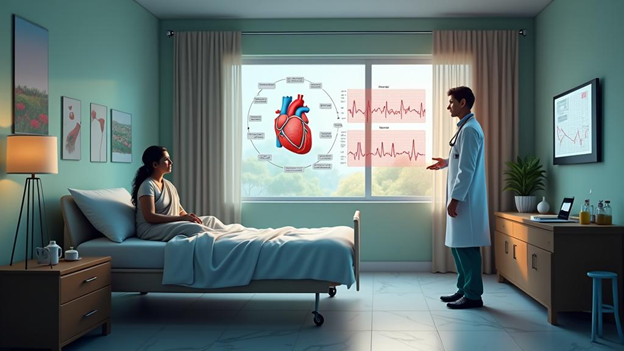Arrhythmia is a common condition that affects the heart’s rhythm. This can have significant implications on our health. Understanding it is especially crucial for the Indian population. Factors like unique lifestyles and genetic traits can influence heart health here. This blog aims to educate the public on symptoms, causes, and treatments of arrhythmia. By doing so, we hope to empower individuals with the knowledge to handle their heart health better.
What is Arrhythmia?
The heart usually beats in a steady rhythm. This regular beat is crucial for pumping blood effectively. When there’s a disruption, it’s called arrhythmia. Types include:
- Bradycardia: A slower-than-normal heartbeat.
- Tachycardia: A faster-than-normal heartbeat.
- Atrial fibrillation: Irregular and often rapid heart rhythm.
Having a regular heartbeat is essential for keeping our heart in top shape. With arrhythmia, things can go off track. This makes learning about it important.
Comprehending Causes of Arrhythmia
Several factors globally contribute to what causes arrhythmia:
- Heart issues like disease or defects.
- High blood pressure can lead to irregular heartbeats.
- Substance use, including caffeine or alcohol.
In India, specific risks include our busy lifestyles, a genetic predisposition, and frequent exposure to pollutants. Stress from rapid city living, spicy diets, and polluted air can also upset heart rhythms. Knowing these influences helps in prevention and care.
Identifying Symptoms of Arrhythmia
Spotting arrhythmia can be tricky if you’re not familiar with the signs. Watch out for:
- Palpitations or a fluttering feeling in the chest.
- Dizziness or lightheadedness.
- Shortness of breath, even during mild activities.
These can often be clues that something isn’t right. It’s important to differentiate between common sensations and actual symptoms. Anytime these occur, seek medical advice quickly. Getting it checked early reduces further risks.
Diagnosis and Detection
For diagnosing arrhythmia, doctors use several tests. Common ones are:
- Electrocardiogram (ECG): Checks heart activity.
- Holter monitors: Track heart rhythm over days.
Regular check-ups and self-assessment are important. Thankfully, many Indian hospitals have these facilities. These tests are crucial in identifying any irregularities in heart rhythm. Ensuring accessibility for everyone can help save lives.
Exploring Treatment Options for Arrhythmia
When it comes to treating arrhythmia, options abound:
- Medicines: These regulate heart rhythm but can have mild side effects.
- Procedures: Catheter ablation destroys small heart muscle sections to fix rhythm issues. Pacemakers help steady the heart beat.
- Lifestyle adjustments: The Indian diet, rich in spices, can aid heart health. Include foods like lentils and greens.
Indian medical centers offer diverse treatments. Diverse interventions make sure each person’s needs are met.
Preventive Measures and Heart-Healthy Tips
Preventing arrhythmia keeps the heart thriving. Here’s how:
- Maintain routine physical activity.
- Follow a balanced diet, emphasizing traditional foods.
- Reduce stress through yoga and meditation.
Initiatives by local communities and governments support heart health. Cultivating these habits early can prevent numerous heart conditions over time.

